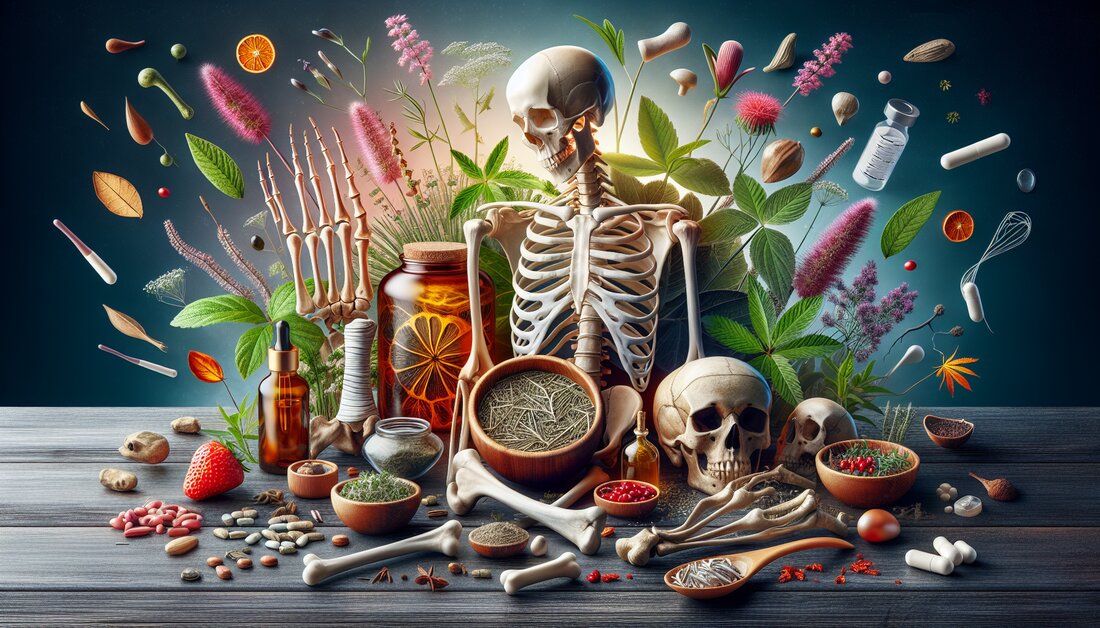Alternative medicine for rare bone diseases & osteoporosis
Interesting study shows: Patients with rare bone diseases use CAM, but less than expected. #Health #CAM

Alternative medicine for rare bone diseases & osteoporosis
The use of complementary and alternative medicine (CAM) has become increasingly popular. However, there is little data regarding the prevalence of CAM in patients with rare bone diseases (RBDs). A recent study, conducted in a referral hospital for RBDs, aimed to address this gap. They compared CAM use among RBD patients with those suffering from osteoporosis (OPO) and healthy controls (CON).
The results showed that treatments by naturopaths/healers were significantly more common in the RBD group than in the OPO patients and the CON. More than half of OPO and CON reported vitamin/mineral use in the past year, while less than half of RBD patients did. Additionally, it was found that individuals with higher education were more likely to seek out a CAM provider.
The most common forms of CAM among RBD patients were herbal medicine, vitamins and mineral supplements, and self-help techniques. Nevertheless, overall use of CAM was low in this patient population.
These findings could have important implications for future research and the practical treatment of patients with rare bone diseases. First, this could lead to greater integration of CAM into treatment strategies, particularly in cases where traditional medications may not be sufficiently effective. On the other hand, this could promote the development of specific guidelines for the use of CAM in these special patient groups.
Basic terms and concepts:
- Complementary and alternative medicine (CAM): Ein Begriff, der eine breite Palette von Gesundheitsansätzen und -therapien bezeichnet, die außerhalb der konventionellen, westlichen Medizin stehen.
- Seltene Knochenerkrankungen (RBDs): Eine Gruppe von Erkrankungen, die die Knochen betreffen und selten vorkommen, wie z.B. Osteogenesis imperfecta, Hypophosphatasie und X-chromosomale Hypophosphatämie.
- Osteoporose (OPO): Eine Erkrankung, bei der die Knochen an Dichte verlieren, schwächer werden und ein erhöhtes Risiko für Brüche besteht.
- Kontrollgruppe (CON): Eine Gruppe von Personen ohne die zu untersuchende Bedingung oder Krankheit, die als Vergleichsgruppe in Studien dient.
This study provides valuable insight into the use of CAM among patients with rare bone diseases and suggests that despite the growing popularity of CAM, its use in these patients is still limited. Future research could help identify potential barriers and find ways to more effectively integrate CAM into the treatment plans of this patient population.
Use of CAM in patients with rare bone diseases
Summary of research results: The study showed that patients with rare bone diseases (RBDs) have different patterns in the use of complementary and alternative medicine (CAM) compared to osteoporosis patients (OPO) and healthy controls (CON). In particular, treatments by alternative practitioners/healers were more common in the RBD group. Additionally, vitamin and mineral intake was more common in OPO and CON participants than in RBD patients. Education level had a significant impact on the likelihood of receiving CAM services.
methodology
The study conducted a cross-sectional investigation in a referral hospital for rare bone diseases. Included were 50 patients with RBDs (mean age 48.8 ± 15.9 years; 26% male), 51 OPO patients (mean age 66.6 ± 10.0 years; 9.8% male) and 52 healthy controls (mean age 50.8 ± 16.3 years; 26.9% male). The German version of the I-CAM questionnaire (I-CAM-G) was used to collect data.
Results
- Behandlungen durch Heilpraktiker oder Heiler waren in der RBD-Gruppe mit 11,4% verbreiteter als in den Gruppen OPO (0%) und CON (5,8%), wobei dieser Unterschied an der Grenze zur statistischen Signifikanz lag (p=0,06).
- Mehr als die Hälfte der OPO (60,8%) und CON (63,5%) Teilnehmer berichteten über die Einnahme von Vitaminen/Mineralstoffen in den letzten 12 Monaten, verglichen mit 46% in der RBD-Gruppe (p=0,16).
- Teilnehmer mit höherem Bildungsabschluss wiesen eine signifikant höhere Wahrscheinlichkeit (Odds Ratio 2,64; 95% CI: 1,04-6,70; p=0,04) auf, jegliche Form von CAM-Diensten in Anspruch zu nehmen.
- OPO-Patienten nutzten signifikant seltener Selbsthilfetechniken im Vergleich zur CON-Gruppe (OR = 0,42; 95% CI: 0,19-0,95; p=0,04).
Conclusions
The study shows that patients with rare bone diseases use CAM differently than osteoporosis patients and healthy controls, with herbal medicine, vitamins, minerals and self-help techniques highlighted as the most common forms of CAM. However, the overall use of CAM was low in this patient population. The results highlight the need for further research into the role of CAM in the treatment of rare bone diseases.
Further information about the study can be found at: Pubmed.

 Suche
Suche
 Mein Konto
Mein Konto
